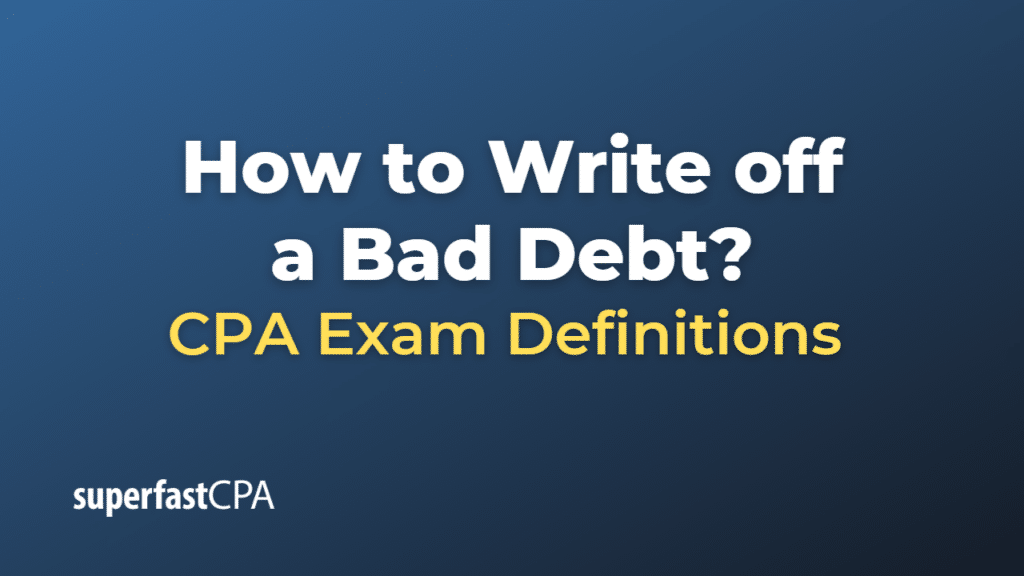How to Write off a Bad Debt
Writing off a bad debt involves recognizing that a receivable is uncollectible and removing it from the company’s books. This usually happens when a customer fails to pay an invoice within a reasonable or expected period of time.
Here are the steps to write off a bad debt:
- Identify Uncollectible Receivables: This involves examining the company’s accounts receivable and identifying any that are unlikely to be collected.
- Determine the Write-off Amount: The write-off amount is typically the receivable’s carrying amount, which is the amount the company expected to collect.
- Record the Write-off: The write-off is recorded as an increase (debit) to a bad debt expense account and a decrease (credit) to accounts receivable. The bad debt expense account might be called “Bad Debt Expense” or “Allowance for Doubtful Accounts,” depending on the company’s accounting method.
The journal entry for a direct write-off of bad debt is:
| Date | Account Title | Debit ($) | Credit ($) |
|---|---|---|---|
| mm/dd/yyyy | Bad Debt Expense | xxx | |
| Accounts Receivable | xxx |
- Report the Write-off: The write-off will be reflected in the income statement as an expense, increasing the company’s expenses and reducing its net income for the period. It will also reduce the value of accounts receivable reported on the balance sheet.
It’s important to note that there are two primary methods for dealing with bad debts: the direct write-off method (described above) and the allowance method. The allowance method involves estimating bad debts before they occur, and is generally preferred by GAAP for financial reporting purposes because it better aligns the recognition of revenues and the associated expenses.
However, for tax purposes, many companies use the direct write-off method, as tax authorities often do not allow companies to deduct bad debt expense until it is certain that the debt is uncollectible.
As always, consult with a qualified accountant or financial advisor if you are unsure.
Example of How to Write off a Bad Debt
Let’s consider an example where a company named “TechCo” provided services to “ClientX” and issued an invoice of $2,000. However, after several months of unsuccessful collection efforts, TechCo determines that ClientX will not be paying the invoice.
Here’s how TechCo would write off the bad debt:
- Identify Uncollectible Receivables: TechCo identifies the $2,000 owed by ClientX as uncollectible.
- Determine the Write-off Amount: The write-off amount will be $2,000, which is the amount TechCo expected to collect from ClientX.
- Record the Write-off: TechCo makes the following journal entry to write off the bad debt:
Date, Account, Title, Debit ($), Credit ($)
06/23/2023, Bad Debt Expense, 2,000, Accounts Receivable, 2,000
This entry records a $2,000 bad debt expense, increasing TechCo’s expenses for the period, and reduces accounts receivable by $2,000, indicating that TechCo no longer expects to collect $2,000 from ClientX. - Report the Write-off : The write-off will appear as a $2,000 expense on TechCo’s income statement, reducing net income for the period. The write-off will also reduce accounts receivable on TechCo’s balance sheet by $2,000.
Remember, this is just an example, and the actual process and account names used can vary depending on the company’s accounting policies and the accounting standards it follows. When dealing with actual bad debts, it’s always a good idea to consult with a qualified accountant or financial advisor.













